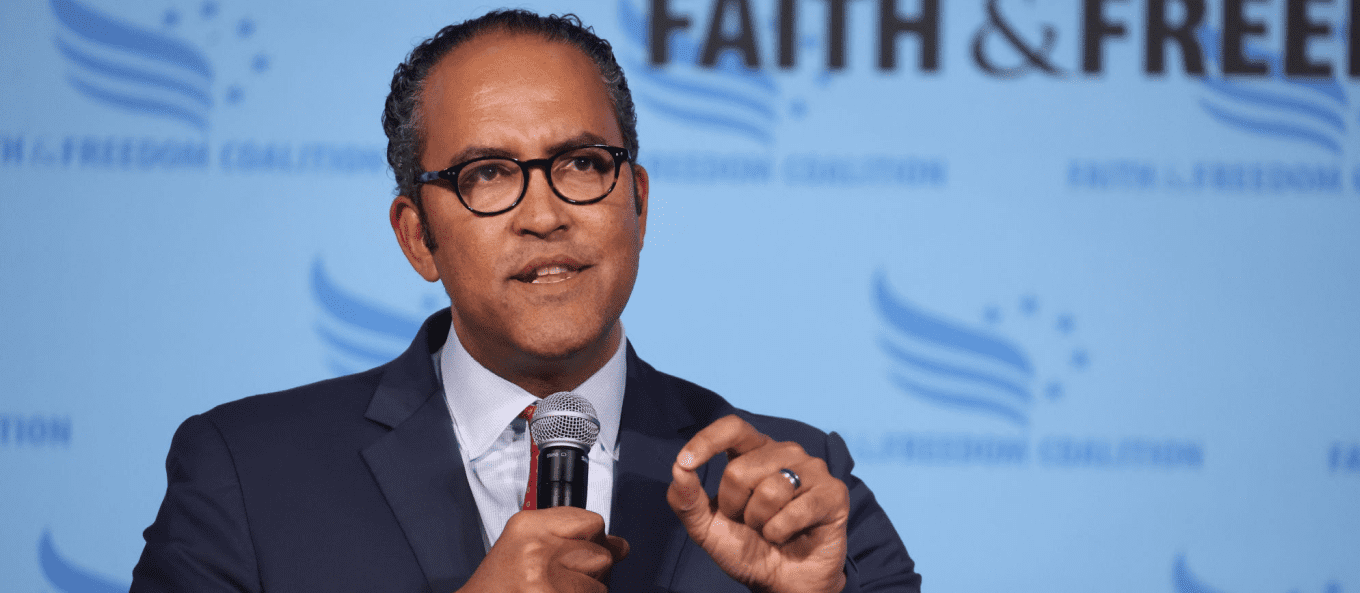Photo: Waikiki beach and Diamond Head Mountain in Honolulu, Hawaii – Maridav
The short answer to the question would Russia & China attack Hawaii is: Not in the near future. The long answer is: It’s something we should be actively gameplanning for. Both China and Russia have been expanding their military capabilities in the broader Indo-Pacific region. They are working with fellow BRICS nations to limit American financial power around the world. U.S. military leaders have repeatedly warned about the potential for Chinese Communist Party (CCP)-directed aggression in the Indo-Pacific and our Japanese allies have warned of an attack on Hawaii.
While national security professionals view an attack on the 50th state in our Union as unlikely, the United States should be taking steps to prepare for any possible contingency in order to protect our interests in the region and especially in Hawaii, because it is the heart of American Indo-Pacific operations.
Russian Warships Near Hawaii – It Has Happened

Photo: The Russian destroyer Admiral Vinogradov seen from the USS America – USNI News, July 17, 2016
The Russian Navy has a history of sailing near Hawaii. For example, in 2016, the Russian destroyer Admiral Vinogradov shadowed a US Navy amphibious assault ship during the Rim of the Pacific exercise, generally staying about one or two nautical miles away but at times coming as close as about 1,000 yards.
In 2019, this same Russian destroyer came within 50 yards of the USS Chancellorsville in an “unplanned encounter” that almost caused a crash in the Philippine Sea. This was the closest Russian and American warships had come to each other in years.
In June 2021, the Russian Navy conducted an exercise 400 miles west of Hawaii, its largest operation in the Pacific Ocean since the end of the Cold War. This exercise caused the U.S. military to scramble fighter jets in response to Russian bombers moving close to American air space.
Even in early 2023, with tensions continuing to rise between Washington and Moscow over Russia’s invasion of Ukraine, the U.S. Coast Guard revealed it was tracking a suspected Russian spy ship off the coast of Hawaii in international waters.
Russia And China Attacking Hawaii – Not a Crazy Idea

Photo: Russian Minister of Defense General Sergei Shoigu and Chinese General Zhang Youxia, Vice Chairman of the Central Military Commission – Russian Ministry of Defense
China and Russia have conducted joint military exercises regularly since 2005. For example, in 2016 the two countries held joint naval exercises in the South China Sea. In 2018, they held large-scale military drills in eastern Russia. In August 2023, nearly a dozen Russian and Chinese ships conducted a joint exercise near Alaska’s Aleutian Islands. As explained by the Center for Strategic and Intelligence Studies, “These regular Sino-Russian exercises have become a foundational tool for institutionalizing bilateral defense ties without a formal military alliance.”
These exercises have raised concerns among the U.S. and its allies about the strengthening military ties between the two countries. By conducting joint military drills, China and Russia are signaling that they are working together to develop their military capabilities, as well as to build a stronger strategic relationship to counterbalance U.S. influence.
In September of 2022, a joint military exercise took place in Russia and the Sea of Japan involving more than 50,000 troops and 5,000 weapons units, including 140 aircraft and 60 warships. Beijing sent more than 2,000 troops, 300 military vehicles, 21 combat aircraft and three warships to take part in the drills with the Russian military. Official Chinese government press reports indicate this was the first time that Chinese communist forces from three branches of its military had taken part in a single Russian drill.
This is just one example of how defense ties between Moscow and Beijing have grown stronger since Russian president Vladimir Putin invaded Ukraine.
Japan Warns US Of Attack On Hawaii
In a speech in mid-2021, Former State Minister of Defense for Japan Yasuhide Nakayama opined that Russia and China were coordinating military exercises to threaten not only Taiwan but also Hawaii. This senior Japanese defense official warned the United States to beware of a Pearl Harbor-style surprise attack that would create a conflict that could lead to World War 3.
Hawaii is important not only because it’s in the middle of the Pacific Ocean, but it is also the headquarters of the U.S. Indo-Pacific Command (or INDOPACOM). INDOPACOM is responsible for using and integrating United States Army, Navy, Air Force and Marine Corps forces within the Indo Pacific area of responsibility to achieve U.S. national security objectives.
Hawaii is also home to Joint Base Pearl Harbor–Hickam, a United States military base on the island of Oahu. Pearl Harbor is home to the US Pacific Fleet, which provides naval forces to INDOPACOM. Pearl Harbor has been playing an important role in U.S. naval activity since 1887, which is one reason it was the target of a Japanese surprise attack during World War II.
Pearl Harbor – What Happened in World War II

On December 7, 1941, the Imperial Japanese Navy launched a surprise attack on the United States naval base at Pearl Harbor, Hawaii — the home of the largest American naval force in the Pacific. The Japanese attack resulted in the deaths of over 2,400 American servicemen and civilians and led to the United States’ entry into World War II.
Why Japan Attack Pearl Harbor
Japan attacked Pearl Harbor to cripple the US Pacific Fleet and prevent it from interfering with Japanese plans for expansion in the Western Pacific. By striking at Pearl Harbor, the Japanese were hoping to take out a large portion of the US Navy’s fleet, which would give Japan an advantage in the later stages of the war.
Japan’s attack on Pearl Harbor was also a response to U.S. economic sanctions that included an oil embargo, which were hurting Japan’s economy.
Could Pearl Harbor Have Been Prevented?

Photo: Original Opana radar plot – National Archives, December 7, 1941
On the morning of December 7, 1941, in Kahwela Bay in the then territory of Hawaii (it did not become a state until 1959) two privates manning the Opana Radar Site noticed a large group of unidentified planes approaching the base at 7:02 a.m. The Opana Radar Site was the first American location to use radar in wartime.
Since World War II had been raging for two years, these two radar technicians called their superiors to report the sighting but were told that the planes were American and not to worry. They continued plotting the incoming planes until 7:40 a.m. when contact was lost, then they headed to breakfast. At 7:55 a.m. 300 Japanese planes, launched from 6 aircraft carriers, dropped their first bombs.
The missed opportunity to correctly identify the incoming Japanese air attack is one of the great “what might have beens” of military history. It is a reminder of the consequences of not being prepared for a high impact but low probability event.
Importance of Indo-Pacific Region

The Indo-Pacific region is a geographic term that generally refers to the area from the Indian Ocean to the western and central Pacific Ocean. It includes many countries, such as India, Australia, Japan, China, Indonesia, and the Philippines.
An important part of this region are the water routes between the island of Japan and Hawaii. These routes are essential for trade, travel, and military operations, and Japan and the U.S. are concerned about maintaining open access to them. Both nations are also wary of Chinese military expansion in the region, which could potentially threaten these routes, as well as broader regional stability.
The Indo-Pacific region is one of the most strategically important regions in the world for the United States. For years, the U.S. has maintained a strong military presence there to preserve stability, protect trade routes, and ensure the security of its allies. In recent years, the rise of China as a global power has made the Indo-Pacific even more critical to U.S. national security.
While the prospect of China attacking Hawaii in the near term is unlikely, the focus of Chinese Communist officials on military modernization, expansion, and economic coercion in the region are tangible examples of their desire to be the regional hegemon, which would undermine U.S. interests in the area. This is why the U.S. needs to work with regional partners to maintain a “free and open” Indo-Pacific, to counter Chinese aggression and maintain regional stability.
What Would Happen If a War Broke Out in the Indo-Pacific

Photo: Taiwanese military exercises – Lam Yik Fei, The New York Times
The most likely scenario that would result in a war in the Indo-Pacific would be China attempting to invade Taiwan, an important ally to the United States. The CCP launching an invasion from mainland China across the Taiwan Straight, according to recent wargames run by CSIS, would be absolutely devastating to both sides.
In most scenarios, Taiwan, Japan and the United States defeated a conventional amphibious invasion by China and maintained an autonomous Taiwan. However, this defense came at high cost.
America would lose multiple aircraft carriers and associated naval assets, China would lose over a hundred naval vessels, both would lose tens of thousands of personnel, and the island of Taiwan would be absolutely devastated with untold civilian casualties. Even though the United States doesn’t have formal diplomatic relations with Taiwan, America has several agreements to protect Taiwan a fellow democratic country and ally since World War II.
What this projection shows is that armed conflict over this region would not only be incredibly destructive, but it would also be ultimately unproductive, with thousands to millions of lives being lost for no real change in geopolitical position.
Would China Attack Hawaii or Other US territory in a Potential Conflict?
While a Chinese invasion of Taiwan may seem like a high impact but low probability event far from the homeland, we could be affected quite easily. Chinese hypersonic missiles would be among the first munitions fired in this hypothetical war and would likely be aimed at American military targets across the Pacific and Asia to hamstring a U.S. response. American bases in Japan, Guam, and even Hawaii could be affected as the Chinese military attempts to cripple the American war effort before it can adequately respond.
This is far from conjecture as the Chinese military has run drills in the past that include a preemptive strike on American military assets and installations using a wide range of missiles and aircraft. China has gone so far to plan on attacking Hawaii on top of bases in Subic Bay in the Philippines, Iwakuni in Japan, and Guam.
Pearl Harbor remains the headquarters of the US Pacific fleet, and a successful or partially successful surprise attack on it could give Chinese forces enough time to secure a foothold in Taiwan, making any attempt to repulse them even more difficult. The Chinese Government does not have to win outright, just dig in well enough to stretch out the conflict until it becomes untenable for America and its allies.
The Need for Diplomacy and Deterrence

The best method to avoid a World War in the near future is through diplomacy and deterrence, with America’s regional allies South Korea and Japan playing major roles. Japan has recently dedicated more resources towards modernizing their Self Defense Force and reiterated their dedication to the NATO alliance.
The “First Island Chain” — the string of islands lying off the eastern coast of Asia, extending from Japan in the north down to the Philippines in the south — is seen as a potential barrier to Chinese naval expansion. To maintain this credible international deterrence to Chinese aggression, the United States, our Asian partners and NATO will have to work together.
Despite the importance of this region and the need to improve our relationships, successive occupants of the White House have been painfully slow to react to local actors and shifting allegiances. The PRC and the Solomon Islands have signed a multitude of treaties and deals from 2019 to the present that jeopardize the shipping lanes that transport American goods and military equipment to and from our allies in Asia. For instance, from private Chinese ownership of an entire island to an opaque “security pact,” the Solomon Islands has rapidly transitioned from a nation that recognized Taiwanese statehood to a pseudo province of the PRC and a jumping off point for the Chinese military.
U.S. Strategy in the Indo-Pacific

Photo: Results of a survey on Foreign Policy of subscribers to “The Brief,” (February 3, 2023)
The United States is not the only country that views the Indo-Pacific region as a strategic priority; So does China. With Chinese military expansion, economic coercion, and attempts to strengthen partnerships in the region, it will be a major area of conflict in our New Cold War with the Chinese Government.
We need an Indo-Pacific strategy for dealing with China, not a China strategy in the Indo-Pacific. This begins with:
- Strengthening Alliances: Focus on strengthening our economic cooperation and military capabilities in the region to include working with allies to maintain a credible deterrent to ensure regional stability.
- Countering CCP Influence: Counter the CCP’s propaganda and malign influence, as well as highlight their human rights violations and environmental destruction.
- Secure Supply Chains: Secure U.S. supply chains in crucial areas such as medicine, technology, and minerals while working to rebuild these capabilities at home.
While the prospect of a Russia and China coordinating an attack on Hawaii is not likely, it is important to be prepared for any potential contingency. The Indo-Pacific region is critical to U.S. national security, and we must work with our allies to maintain a free and open region. By strengthening our alliances, countering CCP influence, and securing supply chains, we can help to ensure stability in the region and protect our interests.
If you enjoyed reading this blog post and you haven’t already, make sure to sign up here for “The Brief!” You’ll get common sense takes on current events, national security, and technology. It’s a twice-a-month email on things that aren’t being discussed but should – all in 5 minutes or less. Plus, we promise not to spam you. Thanks for reading and we hope to see you again soon!






























